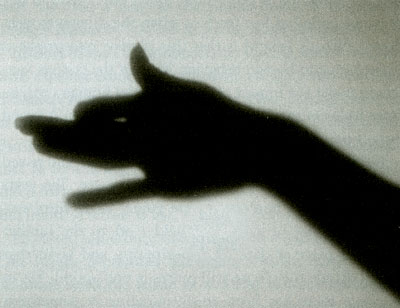What but the wolf’s tooth whittled so fine the fleet hoof of the antelope?
—Robinson Jeffers

Some Buddhists maintain that every moment is a bardo state and every living or sentient creature is being incessantly reborn. I think it not a stretch to hold this tenet in one hand, in the other the Bodhisattva vow as it appears in theDiamond Sutra. That remarkable vow, one of literature’s most sinewy passages and at the core of Buddhist practice, makes explicit that all creatures of whatever description, named or unnamed, are to be brought with us on the Great Journey. This means mammals, birds, fish, plants, bacteria—whatever form a sentient creature takes.
But other evidence has been coming in at an alarming rate: sentient beings of every possible description are getting snuffed out across the planet. In fact, the pace of species extinction is proceeding much faster than in any previous period of loss (such as when the dinosaurs went down). What’s painful is that this current catastrophe is entirely due to human behavior. Most of the critters vanishing under the impact of our-of-control human civilizations have not even been cataloged by biologists. A friend puts it poignantly: “They have no names.”
Wildlands are being cut, plowed, bulldozed, and paved as I type and you read this little bardo piece. Ten years ago the Amazon rainforests were going “every forty seconds / the size of a football field / off to the lumber boats,” a piece of data so disheartening and vivid that after a decade the phrase still pulses in one’s mind. Yet in response there has been an encouraging and sometimes effective counter-movement, not just to protect vanishing species and threatened watersheds, but in many regions across the planet to reintroduce them. That’s why I sometimes tell friends, “Wilderness is not in the past but in the future.” What could this mean? Could the phrase be a koan—one unexplainable even to myself! My guess is it has something to do with humans as a species having a much clearer, better informed, more accurate idea of what wilderness is, what kind of impacts threaten it, and what measures might protect it, than we did only a few decades ago. Wildland recovery projects headed up by thoughtful activists look like they will remain a viable part of our future landscape.
So this would be one in-between or bardo state: wilderness. Just as we exist in an interglacial period—the glaciers withdrew around 10,000 years ago but will surely descend as they follow earth’s old rhythmic cycles—let’s say we live in an inter-wilderness period. A fearsome bardo condition of loud painful flashes, wrenching cries, and conflicting images, where humans as a species have to determine how (and who gets) to live in the future.
One truism is that among species it is usually those at the top of the food chain that disappear first when the ecological fabric is torn. Big predators. So I’ve been happily intrigued by several animal recovery projects. All over North America one uninvited critter has been working diligently on its own recovery: the mountain lion (a.k.a. cougar, puma, catamount, painter). This grand cat has been reappearing in stable numbers here in the Southern Rocky Mountain ecosystem where I live, and also in California, Florida, and Vermont. In fact it never quite went away. Wolves, another strikingly beautiful predator, might therefore be better indicators of a true bardo stage. The gray or timber wolf was once the most widely distributed mammal on earth. Most of our lower forty-eight states, beginning with Massachusetts, hunted it to extinction. Henry David Thoreau watched New Hampshire residents torch Me. Monadnock to clear out the wolf dens. And Colorado’s last wild wolf was shot in 1945. Nonetheless several organizations have been working seriously on reintroducing the wolf to Colorado, led by the cheerfully non-bureaucratic activist group Sinapu (Ute Indian word for wolf). Already wolf populations have been returned successfully by the U.S. Forest Service, up north in Wyoming to Yellowstone, and south in New Mexico.
Various locations have been suggested for Colorado, topped by Rocky Mountain National Park and parts of the White River National Forest. Estimates say that the state could maintain about a thousand wolves off the “surplus” of deer and elk (those that don’t make it through winter due to overpopulation). There is strong, reasonable opposition from ranchers, deer hunters, rural residents, and other people who are likely to run into wolves. These folk will have to be brought into the fold of course, in order for reintroduction to be a success. Yet public opinion appears to be overwhelmingly for reintroduction, and old superstitions, such as the dangers posed by wolves to human children, die out. My favorite bumper sticker reads: Little Red Riding Hood Lied.
I hold to a profound hope that either myself and my friends, or my daughter and hers, will live to hear wolves howl once again in the Southern Rockies. Sometimes it seems inevitable. Listen hard as you will tonight, though, you won’t hear them. Wolf was here, wolf went away. Will wolf return? We live in a planetary hell of lost mammals. But with some hard intelligent work—by eco-activists, biologists, game wardens, Buddhist pracritioners, and poets—this might not have to be a hell for some notable species, but a bardo. An in-between state. ▼